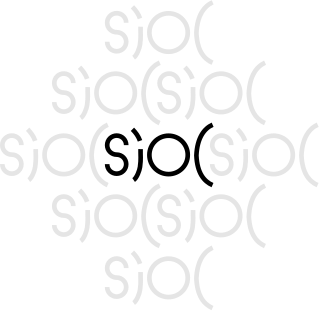Related Research Articles

The Hypertext Transfer Protocol (HTTP) is an application layer protocol in the Internet protocol suite model for distributed, collaborative, hypermedia information systems. HTTP is the foundation of data communication for the World Wide Web, where hypertext documents include hyperlinks to other resources that the user can easily access, for example by a mouse click or by tapping the screen in a web browser.
The Semantic Web, sometimes known as Web 3.0, is an extension of the World Wide Web through standards set by the World Wide Web Consortium (W3C). The goal of the Semantic Web is to make Internet data machine-readable.
The Resource Description Framework (RDF) is a World Wide Web Consortium (W3C) standard originally designed as a data model for metadata. It has come to be used as a general method for description and exchange of graph data. RDF provides a variety of syntax notations and data serialization formats with Turtle currently being the most widely used notation.
WebDAV is a set of extensions to the Hypertext Transfer Protocol (HTTP), which allows user agents to collaboratively author contents directly in an HTTP web server by providing facilities for concurrency control and namespace operations, thus allowing Web to be viewed as a writeable, collaborative medium and not just a read-only medium. WebDAV is defined in RFC 4918 by a working group of the Internet Engineering Task Force (IETF).
Representational state transfer (REST) is a software architectural style that describes a uniform interface between physically separate components, often across the Internet in a Client-Server architecture. REST defines four interface constraints:
The Extensible Metadata Platform (XMP) is an ISO standard, originally created by Adobe Systems Inc., for the creation, processing and interchange of standardized and custom metadata for digital documents and data sets.

FOAF is a machine-readable ontology describing persons, their activities and their relations to other people and objects. Anyone can use FOAF to describe themselves. FOAF allows groups of people to describe social networks without the need for a centralised database.
A web resource is any identifiable resource present on or connected to the World Wide Web. Resources are identified using Uniform Resource Identifiers (URI). In the Semantic Web, web resources and their semantic properties are described using the Resource Description Framework (RDF).
Notation3, or N3 as it is more commonly known, is a shorthand non-XML serialization of Resource Description Framework models, designed with human-readability in mind: N3 is much more compact and readable than XML RDF notation. The format is being developed by Tim Berners-Lee and others from the Semantic Web community. A formalization of the logic underlying N3 was published by Berners-Lee and others in 2008.
Simple Knowledge Organization System (SKOS) is a W3C recommendation designed for representation of thesauri, classification schemes, taxonomies, subject-heading systems, or any other type of structured controlled vocabulary. SKOS is part of the Semantic Web family of standards built upon RDF and RDFS, and its main objective is to enable easy publication and use of such vocabularies as linked data.
The Spring Framework is an application framework and inversion of control container for the Java platform. The framework's core features can be used by any Java application, but there are extensions for building web applications on top of the Java EE platform. Although the framework does not impose any specific programming model, it has become popular in the Java community as an addition to the Enterprise JavaBeans (EJB) model. The Spring Framework is open source.

Virtuoso Universal Server is a middleware and database engine hybrid that combines the functionality of a traditional relational database management system (RDBMS), object–relational database (ORDBMS), virtual database, RDF, XML, free-text, web application server and file server functionality in a single system. Rather than have dedicated servers for each of the aforementioned functionality realms, Virtuoso is a "universal server"; it enables a single multithreaded server process that implements multiple protocols. The free and open source edition of Virtuoso Universal Server is also known as OpenLink Virtuoso. The software has been developed by OpenLink Software with Kingsley Uyi Idehen and Orri Erling as the chief software architects.
Semantic publishing on the Web, or semantic web publishing, refers to publishing information on the web as documents accompanied by semantic markup. Semantic publication provides a way for computers to understand the structure and even the meaning of the published information, making information search and data integration more efficient.

Semantically-Interlinked Online Communities Project is a Semantic Web technology. SIOC provides methods for interconnecting discussion methods such as blogs, forums and mailing lists to each other. It consists of the SIOC ontology, an open-standard machine readable format for expressing the information contained both explicitly and implicitly in Internet discussion methods, of SIOC metadata producers for a number of popular blogging platforms and content management systems, and of storage and browsing/searching systems for leveraging this SIOC data.

In computing, linked data is structured data which is interlinked with other data so it becomes more useful through semantic queries. It builds upon standard Web technologies such as HTTP, RDF and URIs, but rather than using them to serve web pages only for human readers, it extends them to share information in a way that can be read automatically by computers. Part of the vision of linked data is for the Internet to become a global database.

In computing, POST is a request method supported by HTTP used by the World Wide Web. By design, the POST request method requests that a web server accept the data enclosed in the body of the request message, most likely for storing it. It is often used when uploading a file or when submitting a completed web form.
Google Cloud Storage is a RESTful online file storage web service for storing and accessing data on Google Cloud Platform infrastructure. The service combines the performance and scalability of Google's cloud with advanced security and sharing capabilities. It is an Infrastructure as a Service (IaaS), comparable to Amazon S3. Contrary to Google Drive and according to different service specifications, Google Cloud Storage appears to be more suitable for enterprises.
JSON-LD is a method of encoding linked data using JSON. One goal for JSON-LD was to require as little effort as possible from developers to transform their existing JSON to JSON-LD. JSON-LD allows data to be serialized in a way that is similar to traditional JSON. It was initially developed by the JSON for Linking Data Community Group before being transferred to the RDF Working Group for review, improvement, and standardization, and is currently maintained by the JSON-LD Working Group. JSON-LD is a World Wide Web Consortium Recommendation.

Apache Marmotta is a linked data platform that comprises several components. In its most basic configuration it is a Linked Data server. Marmotta is one of the reference projects early implementing the new Linked Data Platform recommendation that is being developed by W3C.
Linked Data Notifications (LDN) is a W3C Recommendation that describes a communications protocol based on HTTP, URI, and RDF on how servers (receivers) can receive messages pushed to them by applications (senders), as well as how other applications (consumers) may retrieve those messages. Any web resource can advertise a receiving endpoint (inbox) for notification messages. Messages are expressed in RDF, and can contain arbitrary data.
References
- ↑ Mihindukulasooriya, Nandana (2014-11-05). "Learning W3C Linked Data Platform with examples".
- ↑ Burleson, Cody (10 July 2014). "Introduction to: Linked Data Platform". semanticweb.com. Archived from the original on 9 January 2015. Retrieved 27 August 2014.
- ↑ "Linked Data Platform Working Group". W3C.
- ↑ "Linked Data Platform (LDP) Working Group Charter". W3C.
- ↑ "Linked Data Platform (LDP) is a W3C Recommendation". W3C.
- ↑ "SPARQL 1.1 Update". W3C.
- ↑ "Socially aware cloud storage – Design Issues". timbl.
- ↑ "Read-Write linked data – Design Issues". timbl.
- ↑ "Linked Data – Design Issues". timbl.
- ↑ "Getting Started with the Linked Data Platform (LDP)". SemanticWeb.com.
- ↑ "WebDAV Resources". Archived from the original on 2012-06-26.